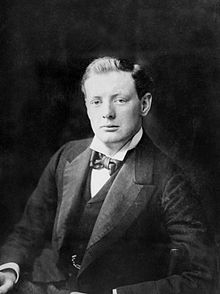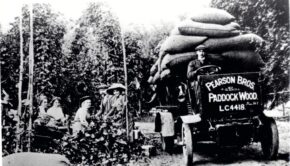Local History: Churchill and the “Dangerous Mistress”
Winston Churchill, Prime Minister, novelist and amateur aviator, described the art of flying as ŌĆ£An extremely dangerous, jealous and exacting mistress. Once under the spell most lovers are faithful to the end, which is not always old age.ŌĆØ
For the first decade of the Air ServiceŌĆÖs existence in Britain, Churchill presided over its direction and purpose, including its inception in 1911 as the Royal Naval Air Service. At this time, the Navy owned approximately six aeroplanes with the same number of pilots. The knowledge surrounding aviation and, in particular, around aviation as a weapon of war, was in its infancy and similarly limited. Churchill recognised the importance fighter planes and bombers would eventually have on the front line and took a keen interest in developing this section of his department.
As a by-product of his enthusiasm, Churchill became familiar with groups of brave young men who were at the forefront of flying, precursors of The Few he would later immortalise. One of the most senior was Commander Samson.┬Ā He had been selected as one of four men to attend the first aviation training courses at the Royal Aero ClubŌĆÖs aerodrome in Eastchurch, on the Isle of Sheppey. He enrolled alongside R. Gregory, A.M. Longmore and G.V. Wildman-Lushington.┬Ā However, in a quirk of fate, Lieutenant Lushington fell ill and was replaced by E.L. Gerrard. The men all qualified and were awarded with aviation certificates and then licences to instruct others at Eastchurch.
Undeterred, Lieutenant Lushington recovered and enrolled the following year, in 1912. Six weeks later, certificate number 290 was written out for him. Presently, he joined the staff at Eastchurch and continued his flying career. Like most of the young pilots of his day, he experienced many scrapes and near misses. Flying over the Weald in 1913 LushingtonŌĆÖs plane got into difficulty and he had to make a crash landing in none other than Jarvis Brook. The Courier covered the story of what became a local sensation, as this exotic machine literally fell from the sky into a little Sussex village.
Lieutenant Lushington soon became Captain Lushington as his reputation and skill grew. In 1913, Churchill finally got the opportunity to learn how to fly one of these machines and Lushington was chosen as his instructor. The pair took off in a dual-controlled plane in what would turn out to be one of many practice sessions for the statesman, who would eventually fly for leisure with the legendary Jack Scott.
However, the quirks of fate continued to twist for Lushington and the day after instructing Churchill he was killed as he crashed after a routine flight from Sheerness. Churchill later wrote: ŌĆ£I was sitting in the Treasury Board Room with the Chancellor of the Exchequer when a slip of paper was put before me acquainting me with the fact that my companion of yesterday had perished in the same machine in which we had been practising for two or three hours.ŌĆØ
Churchill closes his essay with a vivid account of a crash he experienced whilst at the helm of a plane. It finally ended his love affair with this ŌĆśdangerous mistressŌĆÖ and puts into perspective what Lushington, and many more like him, went through.┬Ā






Comments